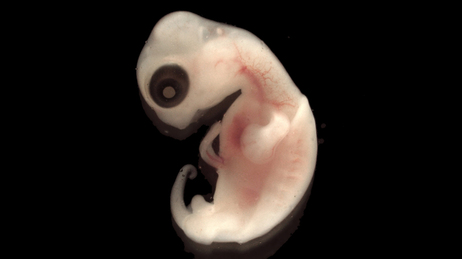
By Eyder Peralta
from NPR.org
We were pretty impressed by this piece of news reported by Wired about Australian turtles:
"Murray River turtles communicate with their siblings while they are still in their shells, buried under the soil, in order to coordinate when they hatch."
The findings were reported in the Nov. 30 edition of the journal Proceedings of the Royal Society B and it's even more fascinating than that sentence lets on, because synchronizing hatchings is complicated. When turtles bury their eggs, some end up near the top, closer to the warm sun, and others near the bottom, closer to the cool soil.
So some embryos develop faster and some slower. But as the time to hatch gets closer, the embryos regulate their development to emerge as a bunch.
How did scientists figure out what was going on? Discover Magazine reports:
"In 2003, [Ricky-John Spencer from the University of Western Sydney] collected clutches of wild eggs, split them into two groups, and incubated them at either 25 or 30°C. He reunited the eggs, and found that they still hatched together. Despite the developmental boost that the hotter half received, the colder ones still emerged in time with them. They either accelerated their development, or they hatched prematurely.
"To work out which, Spencer's student Jessica McGlashan captured pregnant Murray River turtles and allowed them to lay their eggs in a lab. Just as Spencer did previously, she split the clutches into two groups. In some cases, she incubated both groups at 26°C; in others, she incubated one group at 26°C and the other at 30°C. She reunited the eggs a week later and monitored the metabolism of each embryo by measuring how fast its heart was beating, and the amount of carbon dioxide it gave off.
"McGlashan found that the embryos sped up their development if they were incubated with advanced peers, who had enjoyed a week at 30°C. In the weeks before hatching, their heart rates went up and they exhaled 67 per cent more carbon dioxide than turtles whose siblings had all stayed at 26°C."
Spencer told UPI that he was "pretty sure" the turtles weren't chatting with one another. His theory is that they might be listening to each other's heartbeats.
"They are all touching each other within the nests so there might be vibrations there," Spencer told UPI. "A nest environment is pretty much an enclosed cavity where gas exchange might be a cue as well. They breathe, so if you get increases in carbon dioxide within a nest they might be cuing on in that."







No comments:
Post a Comment